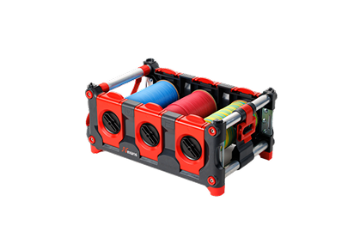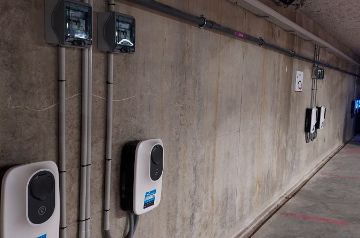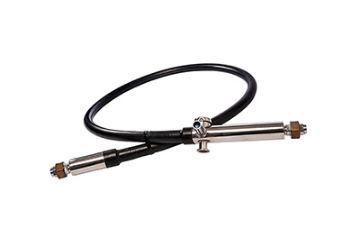- Markets
- Products
- Services
- News
- Tools & Resources
- About Nexans
- Search
- Contact us
- Compare
- Sign in
BIM & Electrical Systems
The Digital Backbone of Smarter Buildings
What is BIM?
new construction by 2060
built every day
Users on BIM Object platform in 2024
BIM stands for Building Information Modeling and has become the digital standard for the construction industry. It’s more than 3D modeling — it’s a comprehensive process involving the creation, management, and sharing of digital representations of buildings and infrastructure. These digital models contain both physical and functional characteristics of built assets.
BIM supports the entire lifecycle of a building, from early design and cost estimation to construction, operation, and maintenance. It's a collaborative process, bringing together all stakeholders—architects, engineers, contractors, and facility managers—around a shared source of truth. Interoperability lies at its core: through standardized exchange formats like IFC or BCF, different software can read, write, and synchronize data simultaneously.
In a world where 230 billion square meters of new construction are expected by 2060 — equivalent to building another Paris every week, one New York City every 34 days, or roughly one Tokyo each quarter — BIM is becoming essential. It supports smarter, more sustainable, and more efficient construction projects, while opening the path to digital twins and energy-efficient buildings.
Electrical Systems in BIM
Electrical systems are no longer an afterthought — they are essential to every structure, from residential buildings to industrial facilities. BIM has revolutionized how electrical engineers design, collaborate, and validate these systems.
Why BIM matters so much for electrical design

- Accuracy by Design
BIM enables electrical engineers to model wiring, power distribution, lighting and more in 3D. These detailed models reduce errors caused by misinterpretations in traditional 2D drawings and improve precision from the earliest stages.
- Real-Time Collaboration
Electrical systems can’t be designed in a silo. With BIM, engineers collaborate directly with architects, HVAC specialists and civil engineers. Everyone works on the same model, resolving conflicts before they reach the construction site.
- Planning and Integration
BIM tools integrate electrical with mechanical and plumbing systems. This cross-disciplinary coordination ensures optimal routing, space utilization and system compatibility throughout the building.
- Cost and Time Savings
By spotting issues early and reducing the need for revisions during construction, BIM can deliver 30–50% time savings. Automated routing, cable lists and documentation simplify the entire workflow.
- Better Visualization, Fewer Surprises
With BIM, engineers gain a 3D view of how electrical systems integrate into the building. This enhances design validation, spatial planning and compliance checks.
- Lifecycle Management
BIM isn’t just for the design phase. Facility managers can use BIM data to locate components, schedule maintenance and optimize system performance throughout the building’s life.

Cables
The Unsung Heroes of Electrification
Cables are often overlooked in design models, yet they are the very arteries of modern buildings. Selecting the right cable isn’t just a technical formality — it’s a crucial decision that impacts safety, energy efficiency, and system performance.
Poor cable sizing can lead to overheating, fire hazards, voltage drops or wasted material. Accurate modeling in BIM enables:
- Overheat Prevention: Ensuring safe load capacity.
- Energy Efficiency: Minimizing energy loss through optimized sizing.
- Voltage Drop Control: Maintaining performance across long distances.
- Code Compliance: Meeting safety and regulatory standards
As BIM becomes more widespread, electrical cables must also be “BIM-ready.” That means having detailed digital attributes — such as resistance, length, and cost — that integrate seamlessly into building models.
“ Selecting the right cable isn’t just a technical formality—it’s a crucial decision that impacts safety, energy efficiency and system performance. ”
Pioneering Cables in BIM
Nexans is the first cable manufacturer to invest in BIM, reinforcing its role as a trusted partner for specifiers and designers. By collaborating with platforms like BIMobject, Nexans provides downloadable BIM objects for a growing range of products. These objects come enriched with critical information:
- Installation guides
- Environmental performance (eco-labels)
- Energy consumption
- Operation costs
- Lifecycle data
This helps architects and engineers make informed choices from the earliest stages of design.
Additionally, Nexans partners with key design software providers to ensure seamless integration of cables into digital construction workflows.
In a world moving towards smart, electrified, low-carbon buildings, cabling is a strategic lever—and BIM is the platform that brings it all together.
Tools that power electrical BIM
Solutions like Caneco BIM/BT (by ALPI) and elec calc BIM (by Trace Software) are shaping the future of electrical design through:
- Full electrical calculation engines (cable sizing, short circuits, protection coordination)
- Native integration with Revit, ArchiCAD, etc.
- Automated documentation (cable lists, panel schedules, schematics)
- Advanced clash detection
- Open BIM compliance via IFC and BCF
- Manufacturer data integration (BIM&CO, Onfly, Nexans, etc.)
These platforms improve design quality, shorten project timelines, and enable truly collaborative workflows.
Building the Electric Future
BIM for electrical systems isn’t just a digital trend — it’s a strategic imperative. From cables and routing to calculations and compliance, BIM empowers engineering teams to design smarter, safer, and more sustainable buildings.
With Nexans and BIM, we support your electrification projects from design to operation. Because the building of the future is electric—and it starts with the right cable.
Our websites
Select your country to find our products and solutions
-
Africa
- Africa
- Ghana
- Ivory Coast
- Morocco
- North West Africa
- Americas
- Asia
- Europe
- Oceania






